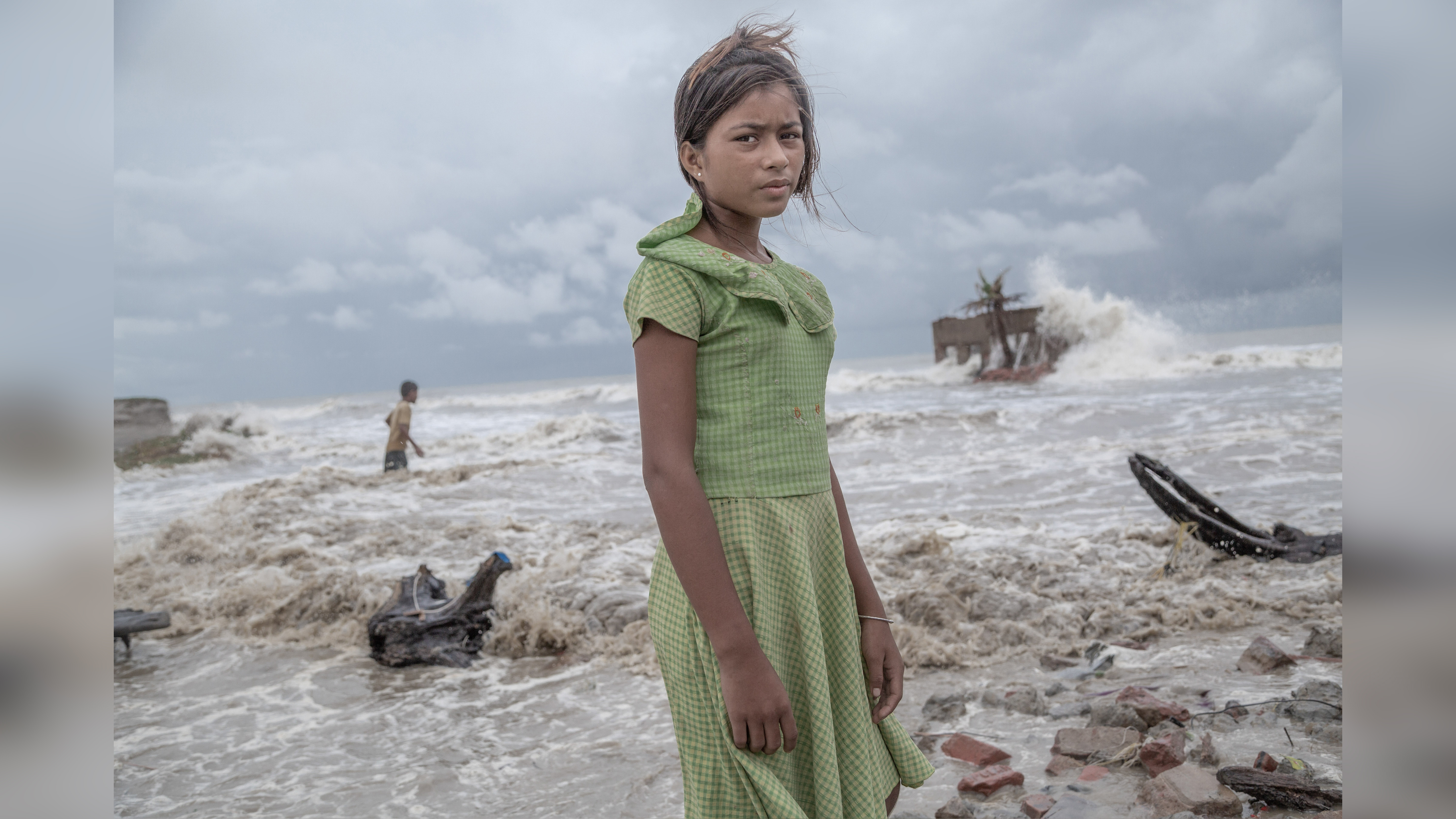
Now in its tenth year, the stunning winners of the Mangrove Photography Awards 2024 have been announced, after weeks of deliberation.
Through its incredible submissions, the competition aims to raise awareness of the people and wildlife that rely on mangrove forests, the imminent threats they face, and why immediate action is required to protect them.
Straddling the space between land and sea, mangroves play an instrumental environmental role. They are essential to coastal human populations, absorbing storm surge impacts during extreme weather such as hurricanes and tsunamis.
Providing an ecosystem for a range of flora and fauna, they also filter nitrates, phosphates and other pollutants from the water, improving the quality flowing from rivers and streams into the ocean.
This year saw a record-breaking 2,500 entries from 74 nations, divided into six categories: People, Landscape, Underwater, Threats, Wildlife, and Stories - while photographers under the age of 24 competed to become the Young Mangrove Photographer of the Year.
Conservation photographer Dhritiman Mukherjee, wildlife photojournalist Morgan Heim, and photojournalist Christian Ziegler made up the expert jury.
Heim said of the competition:
“Stories are how we come to understand, remember and learn from the world, and conservation as a story, is a complicated one. Photography has the ability to help us receive and feel close to those stories no matter our language. Every time I look at this kind of photography, I think, there's still hope.”
Take a look at the winners below, and remember to take a look at all the stunning runners up in the Mangrove Photography Awards, 2024.
Supratim Bhattacharjee, Overall winner, Sinking Sundarbans (Above)
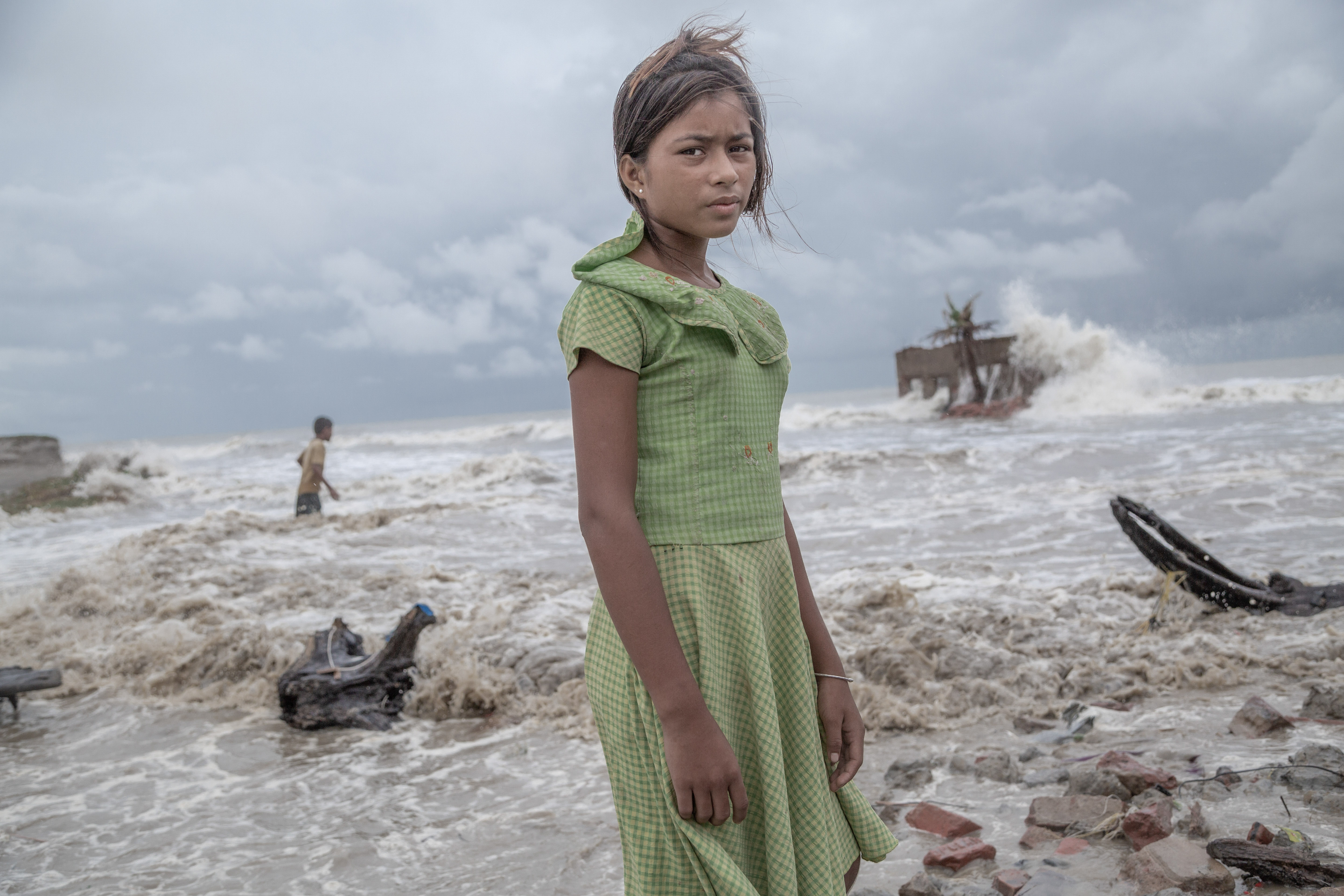
Situated in the Bay of Bengal, the Sundarbans is the largest mangrove forest in the world, and one of the most vulnerable. Intense deforestation has reduced its effectiveness in climate control, and leaves the wildlife and people that rely on it vulnerable.
Supratim Bhattacharjee took this winning photograph of a girl standing before her ruined tea shop in Frazerganj, Sunderbans.
Judge Mukherjee said:
“After Cyclone Aila struck the Sundarbans in 2009, it became clear that frequent cyclonic events will turn the residents of the Sundarbans into climate refugees. Between May 2019 and May 2021, the Sundarbans faced four cyclones – Fani, Bulbul, Amphan, and Yaas – each devastating enough to justify the fear of mass displacement.
“An image that raises a thousand questions, whilst connecting you to the girl’s heart. Her vulnerability exposes the full impact of climate change and sea level rise experienced by many coastal communities.”
Johannes Panji Christo, Winner, Mangroves and People, Mud Bath Ritual

Taken in Bali, Indonesia, Johannes Panji Christo took this photo of a local Balinese man getting covered in mud during a bathing tradition, known locally as Mebuug Buugan.
The tradition was recently revived after culturally fading out of Kedonganan Indigenous peoples 60 years ago. One of the reasons for reviving the tradition is to renew interest in protecting the mangrove forests, which are the source of the mud they use.
Ammar Alsayed Ahmed, Winner, Mangroves and Landscape, Nature’s Ribbon
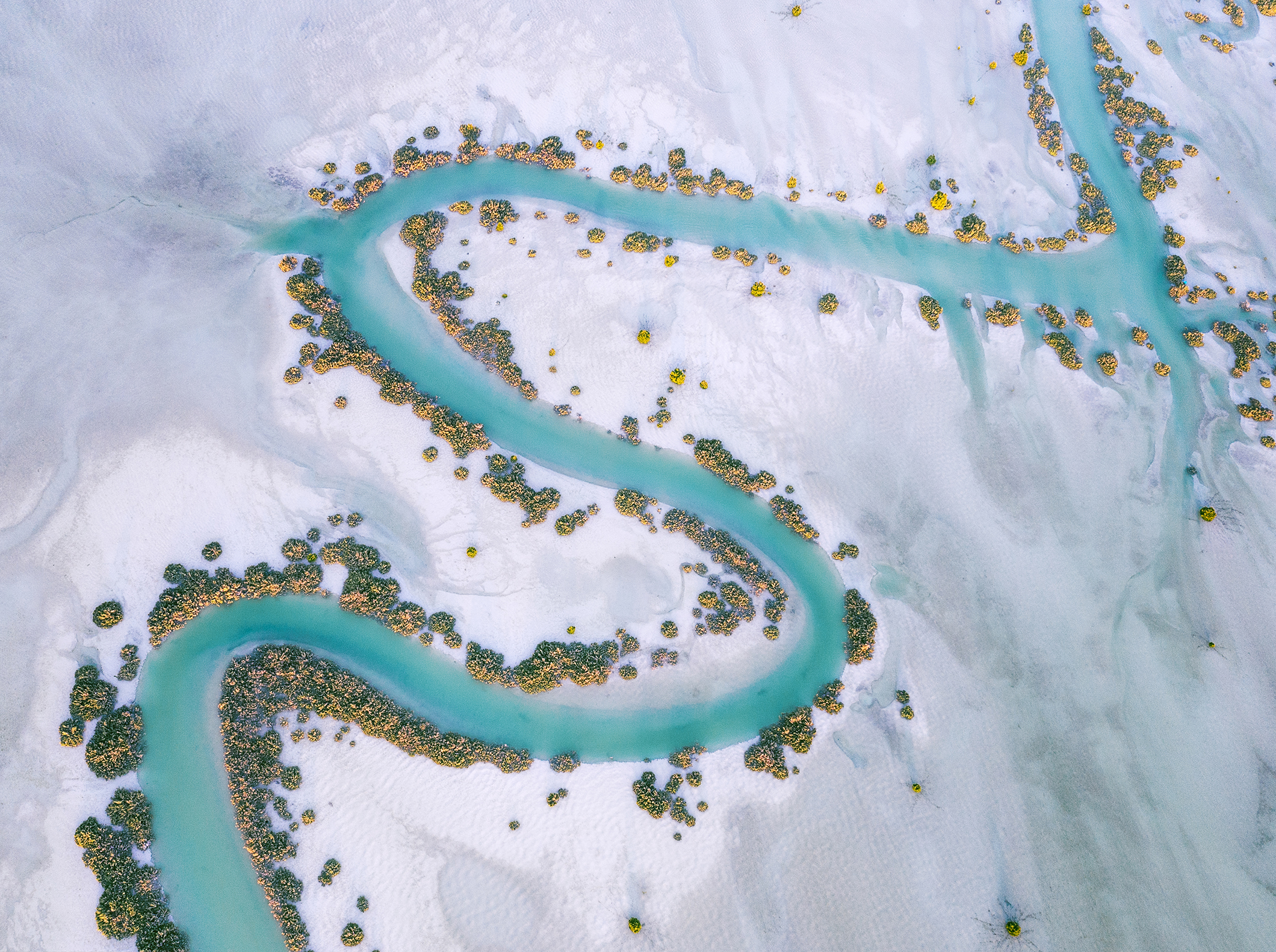
This captivating image of a water channel lined by stoic mangroves was taken in Al Dhafra Region, Abu Dhabi.
Mamsha Al Mugheirah, situated in the Al Dhafra Region, was designed to conserve and protect the natural mangrove habitat. The area invites tourists to walk above the mangroves along a boardwalk, providing visitors with an immersive and educational experience in the critical role of the mangroves.
Mark Ian Cook, Winner, Mangroves and Wildlife, Mud Ring Feeding
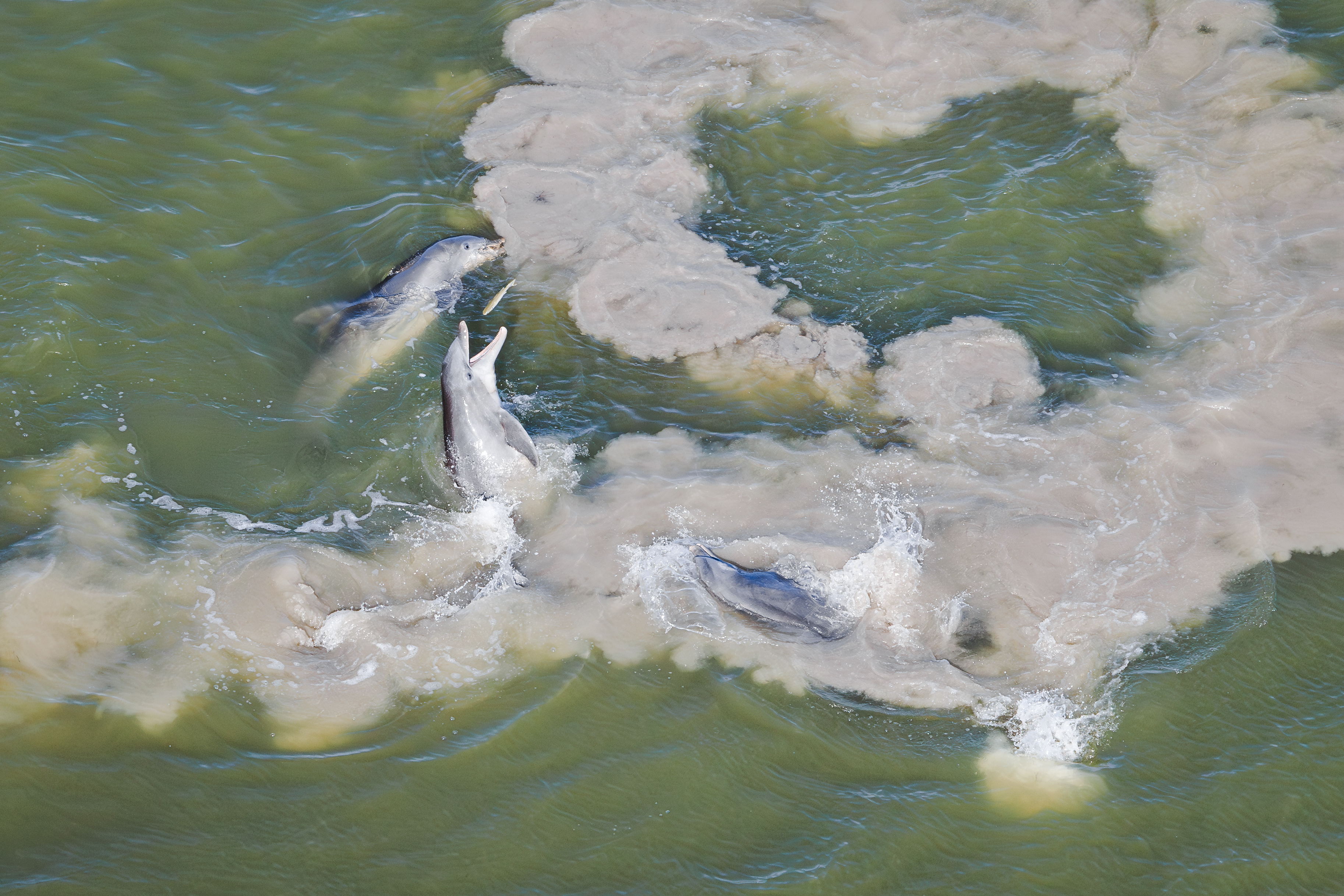
Restoration scientist and photographer Mark Cook witnessed these bottlenose dolphins catching mullet from the air during a behavioral phenomenon known as ‘mud ring feeding’.
The dolphins work together, using this technique to blindside their prey, and it’s been documented in both the Florida Keys, and the Caribbean.
One dolphin known as a ‘ring maker’ will swim in quick circles, near the muddy ocean floor, trapping the fish within the murky barrier, as the others lie in wait to catch disoriented fish, or those trying to jump out of the water and above the ring.
Dipayan Bose, Winner, Mangroves and Threats, Mangrove Walls Broken
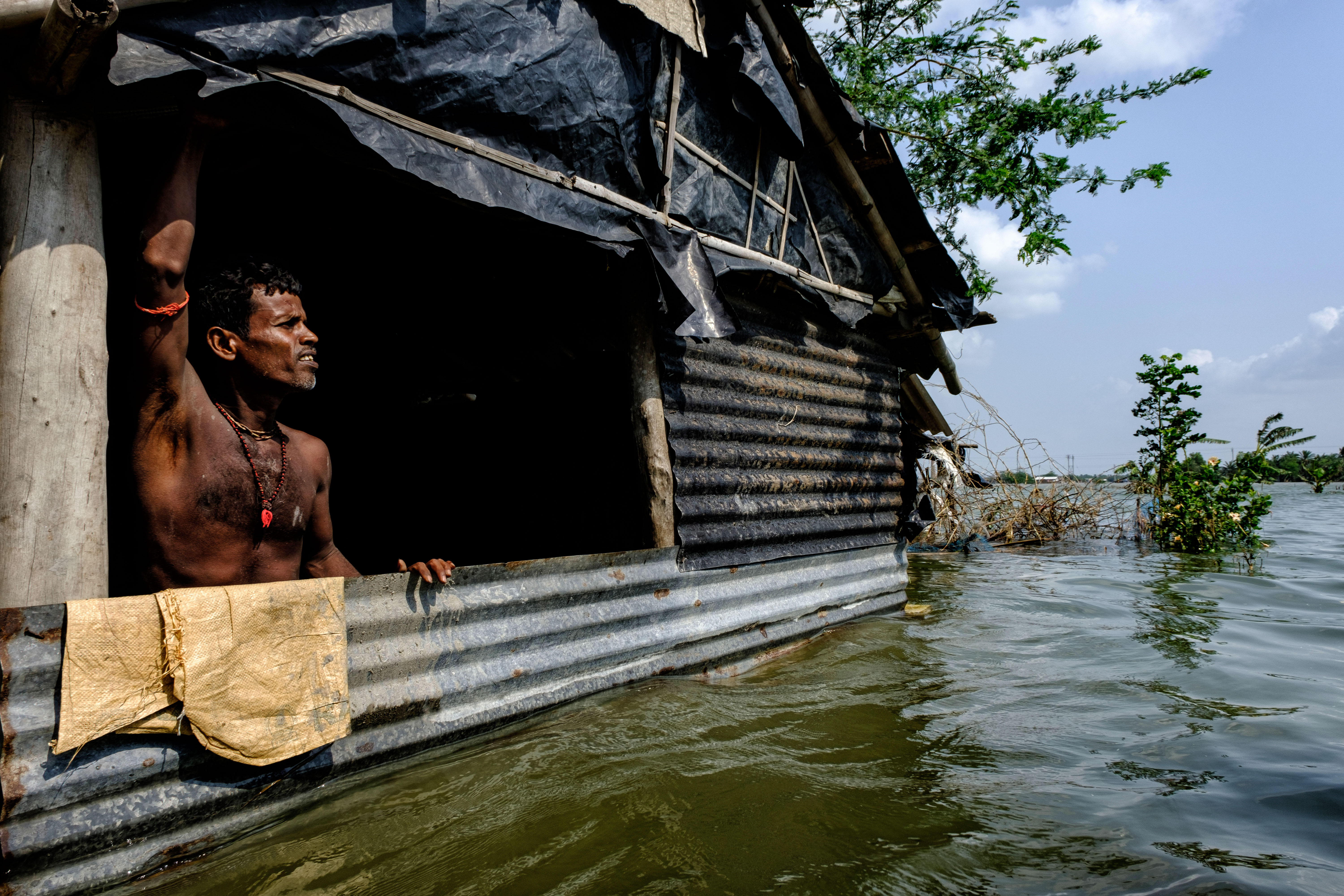
Dipayan Bose captured this striking image of a villager, again in the Sundarbans, standing inside his half submerged home during a flood.
Causing the number of environmental refugees to exponentially increase, the deforestation in the Sundarbans has left coastal villages highly vulnerable to flooding, destroying farms and fisheries.
An approximated 3.14mm annual rise in sea levels in the area has already claimed several islands.
Olivier Clement, Winner, Mangroves and Underwater, Guardians of the Mangroves
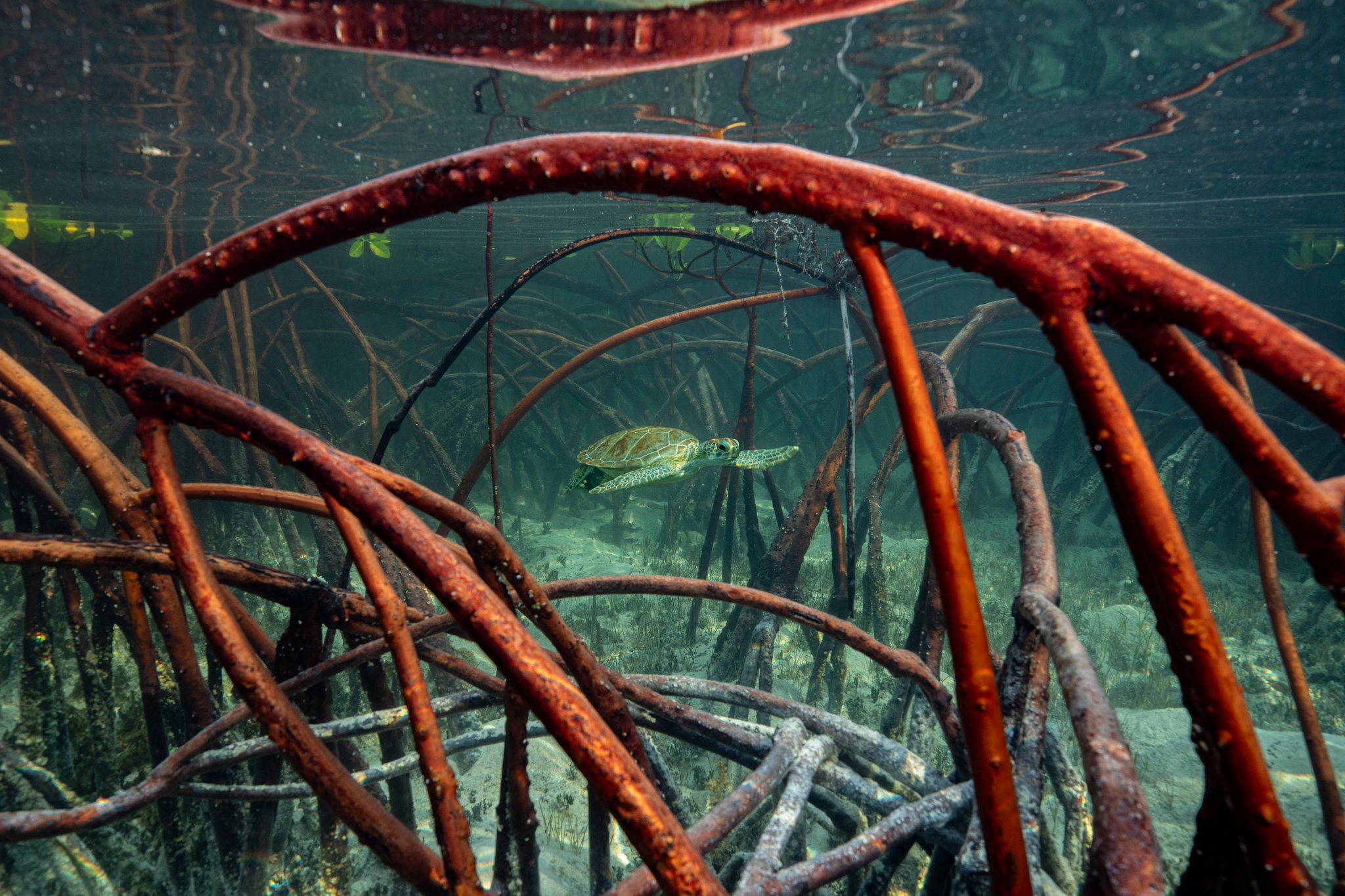
Framing a graceful turtle gliding through the mangroves in the Bahamas, Olivier Clement’s winning image is a reminder of the importance of the mangroves to the survival of many species.
As night falls, the turtle will use the mangroves as a resting place, safe from predators as it hides between the underwater roots.
Judge Ziegler commented on Clement’s use of the roots to frame the image, saying that it “evokes a sense of calm and peace.”
Giacomo d’Orlando, Winner, Mangroves and Conservation Stories, Symbiosis
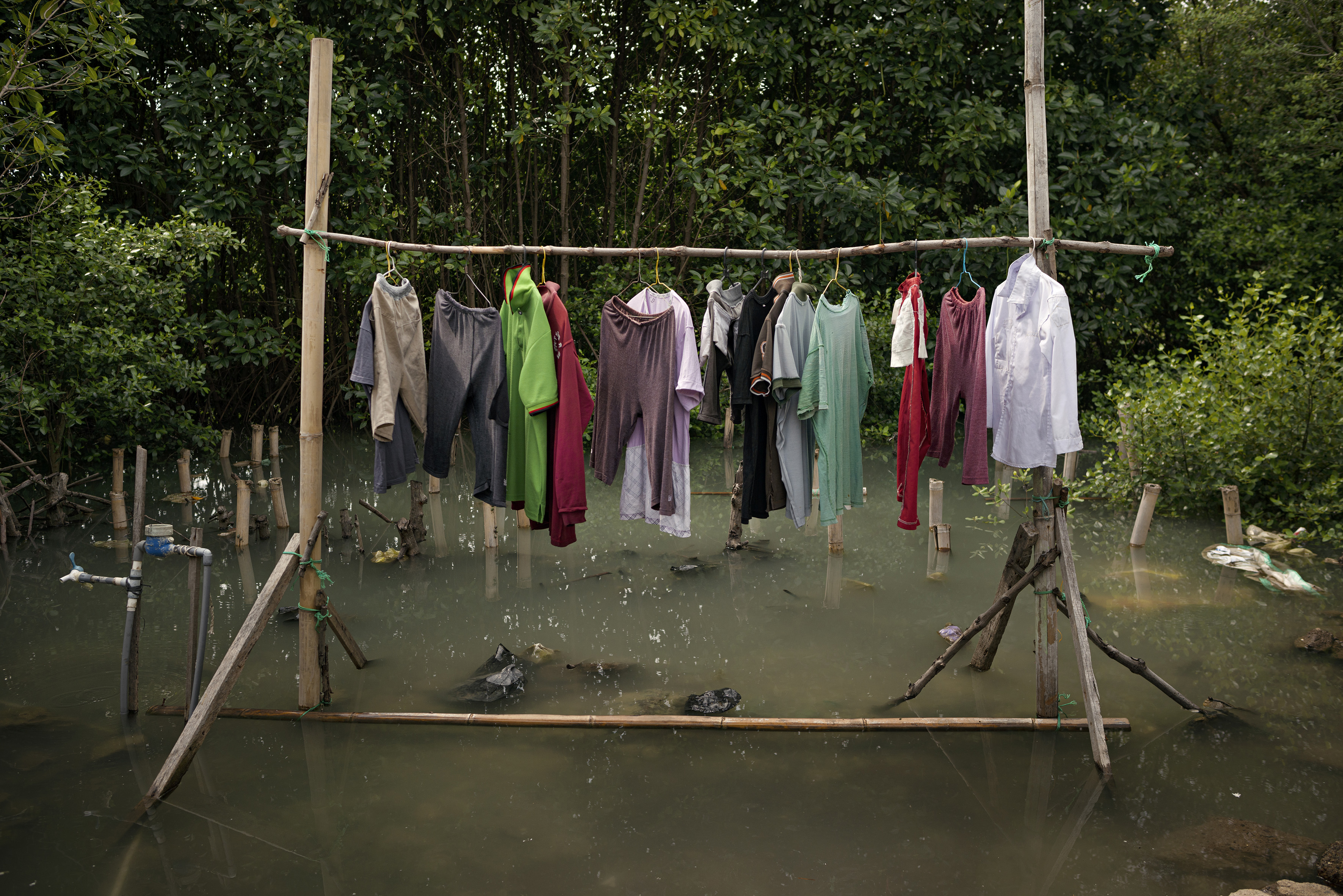
This category celebrates striking portfolios driven by emotional storytelling.
In the coastal Demak Regency in Indonesia, Giacomo d’Orlando portrays life in one of the most vulnerable places to climate change in the world.
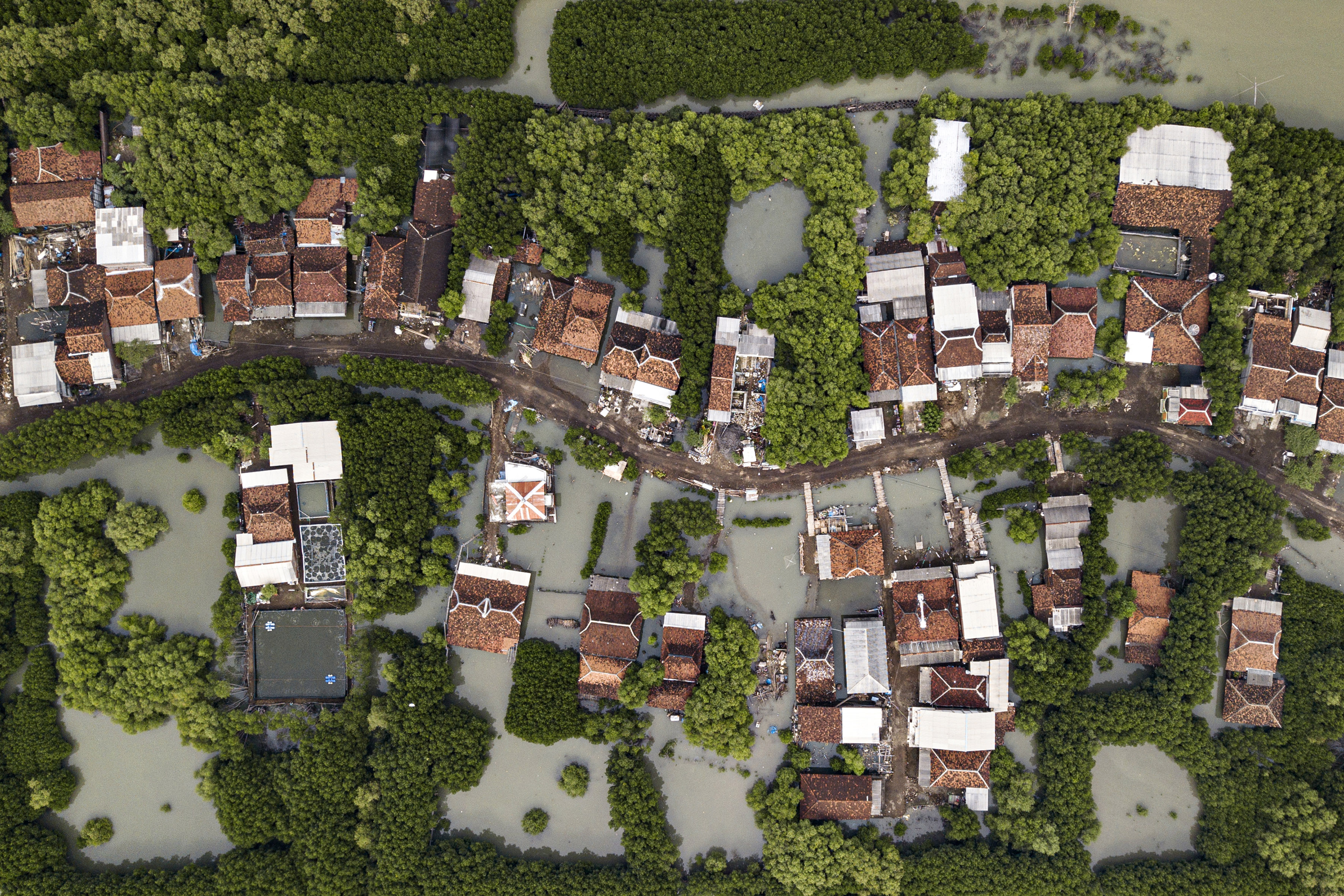
A combination of human induced activities and the increasing pressure from climate change related issues are threatening coastal communities. A severely eroded coastline was once rich with mangrove forests that have since been replaced with aquaculture farms, and the sea is now literally swallowing peoples homes.

The people of this area have, over time, realized that the only way to help their eroding ecosystems is to replant the destroyed mangroves. Nearly 300 farmers in the region have let mangroves grow on their land, and have been schooled in sustainable farming techniques.
Nicholas Alexander Hess, Winner, Young Mangrove Photographer of the Year, Mangrove at Night
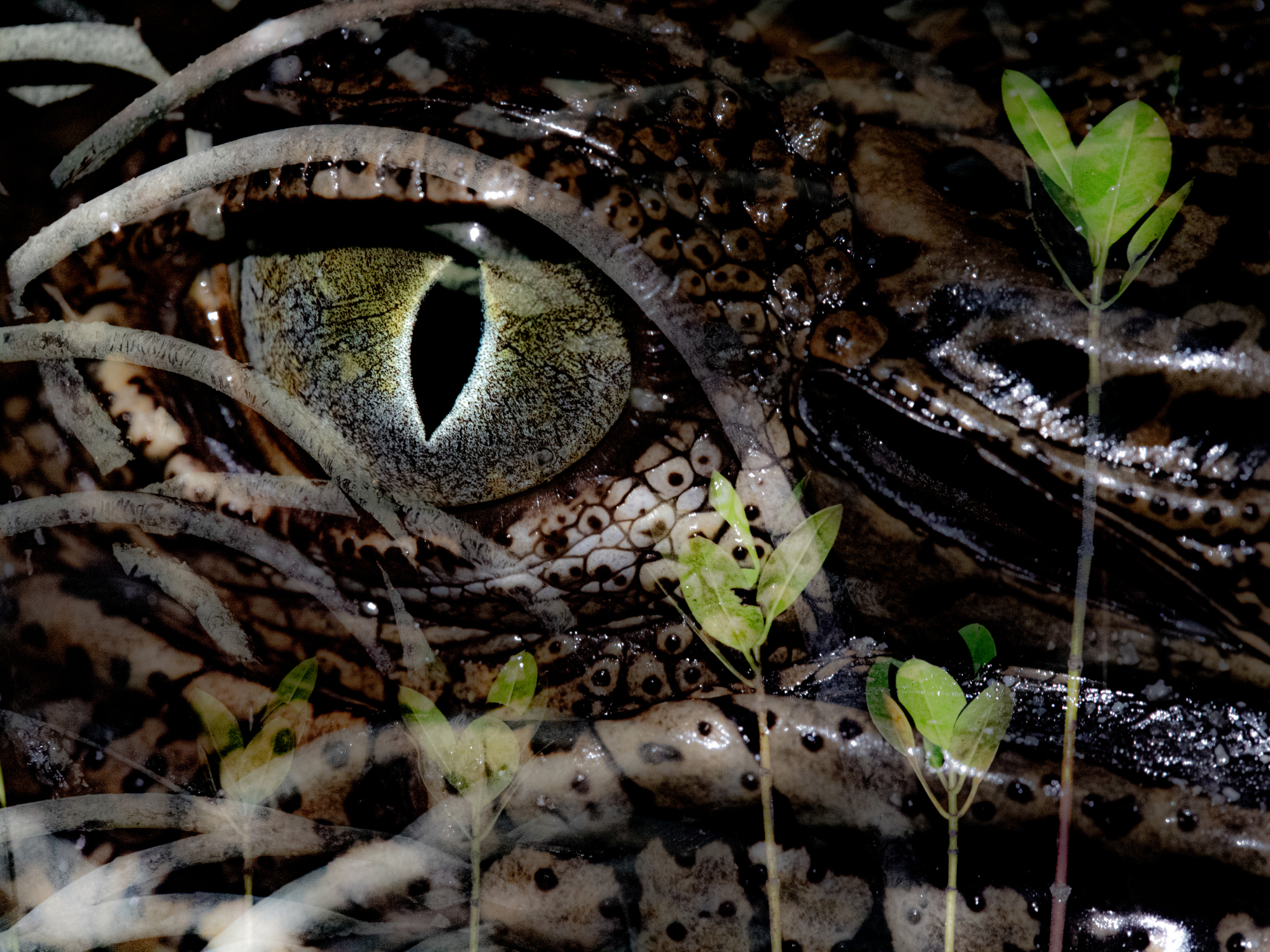
"Equipped only with my macro lens, I wanted to capture more than just this young saltwater crocodile when I encountered it at low tide in the mangroves.
“I used the multiple exposure mode in my camera to superimpose layers onto my image of the croc's eye to capture more of the scene without sacrificing detail of the eye.
“Captured at night, the image gives off a slightly unsettling feeling, such as what one may experience in a mangrove, unknowing of what predators may be lurking nearby, hidden by the dense network of the mangrove."
Take a look at our guides to the best cameras for wildlife photography, the best underwater drones, and the best professionals cameras.







